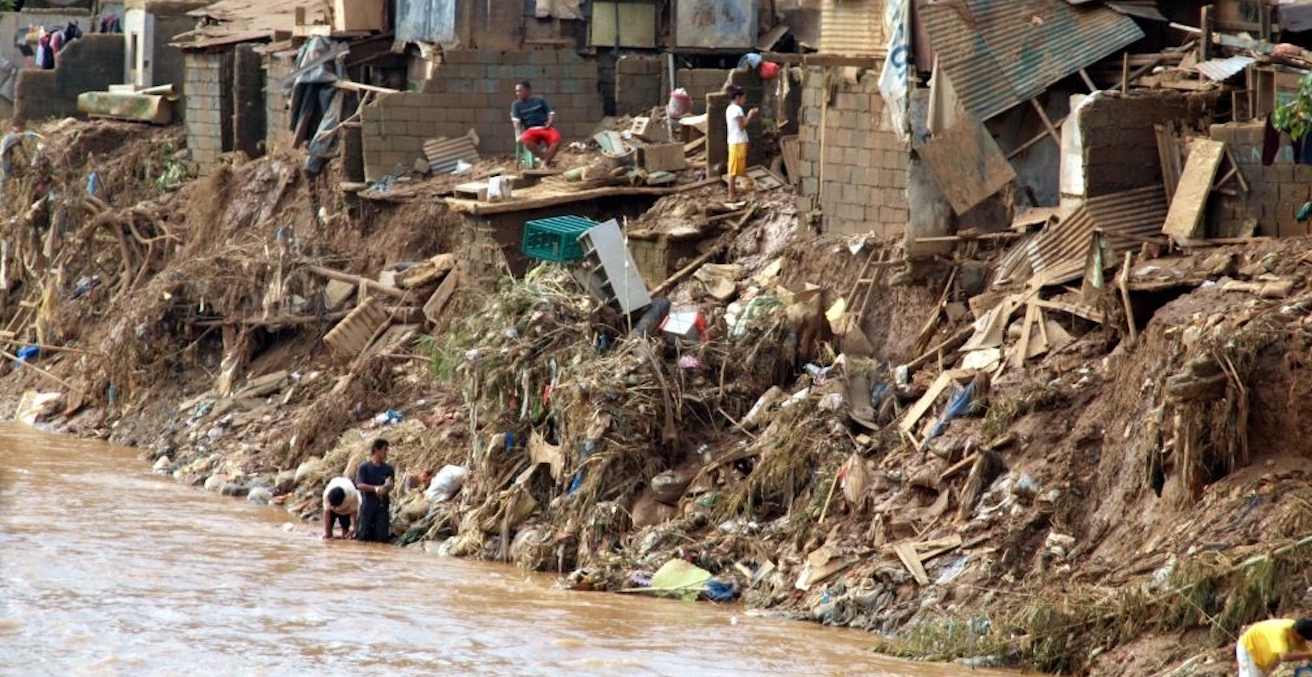The Cascading Impacts of Climate Change

This month the World Bank released a major study warning that more than 800 million people reside in areas that by 2050 will become dangerous climate hotspots. As bad as this seems, it fails to take full account of the cascading impacts of a warming planet.
The World Bank has released this month a major study warning that more than 800 million people—almost half of South Asia’s population—reside in areas that by 2050 will become dangerous climate hotspots. The report, titled South Asia’s Hotspots: Impacts of Temperature and Precipitation Changes, describes the enormous economic impact climate change will have, in some locations reducing GDP by over 10 per cent.
As bad as this seems for a region that is home to one-third of the world’s poor, the reality of climate change will be much worse. Reports of this kind fail to take full account of the cascading impacts of a warming planet, which are likely to be far more harmful than the immediate impacts. The World Bank authors readily acknowledge this. They note that their results do not, for example, address the increasing severity of storms, changes in water resources and sea level rise, climate-induced migration and the compounding impact multiple shocks can have on the economy and on the resilience of communities.
The problem is that incorporating these knock-on effects is analytically challenging not just for economists, but for climate scientists as well. Most major weather and climate-related catastrophes are due to the compound effect of multiple climate and weather factors. As the UN’s Intergovernmental Panel on Climate Change (IPCC) recently pointed out, “there are very few projections of compound extreme events and interactions between multiple drivers are difficult to predict.”
Recent experience in Syria illustrates how disproportionately significant these cascading impacts can be. From 1998 to 2011 the country experienced its worst drought in at least 900 years. From 2006-2011 the country suffered massive crop failures, which undermined livelihoods and forced millions of people to move from rural areas into cities. This mass migration significantly exacerbated social stresses in Syrian cities. Clearly this wasn’t the cause of the Syrian Civil War, but it was a contributing factor and the cascading impacts were profound: a refugee crisis in the region became a refugee crisis in Europe, which in turn contributed to Brexit, the rise of populist governments, and an unprecedented threat to the EU’s institutional survival. The ripple effects are continuing to this day in the political challenges facing Angela Merkel’s coalition government in Germany.
Scientists have estimated that climate change made the Syrian drought two to three times more likely and that the frequency of these extreme events is increasing as the world warms. Climatologist James Hansen has pointed out that the area of the planet experiencing extreme weather at any given moment has already jumped from 0.1 per cent in the 1960s-1980s to 10 per cent in the subsequent three decades: and this with less than one degree of warming. In the decades ahead, with a business-as-usual approach, the climate will warm by well over 3 degrees, with enormous consequences for poverty, food security, population displacement and even conflict. The Syrian example is a sobering taste of things to come.
A number of implications flow from the likelihood that researchers are underestimating the cascading impacts of climate change. First, and most fundamentally, cascading impacts reinforce the urgency of efforts to reduce greenhouse gases as rapidly as possible. We are coming perilously close to climate “tipping points” that will greatly accelerate the warming. Without rapid progress, our efforts to adapt to climate change and reduce disaster risk will founder because of rising seas, extreme weather and the social and political upheavals they will trigger.
Second, the task is extremely complex. Science and policy communities need to strengthen significantly multidisciplinary research into these cascading impacts and governments and other funders need to provide additional support to enable them to do so. Researchers at a number of institutions in Australia, such as at University of New South Wales, the Australian National University Climate Change Institute and at the Commonwealth Scientific and Industrial Research Organisation, need reliable and adequate funding to continue their important work in this area.
Third, the Federal Government should consolidate its work on climate change adaptation and its broader disaster risk reduction efforts. Of recent disasters over the past decades, 80 per cent have been precisely the sort—storms, drought, and floods—that are increasing in frequency and/or severity from climate change. The work of the recently established Disaster and Climate Resilience Reference Group, comprised of senior executive representatives from more than 20 Australian Government departments, is a first step in the right direction.
Earlier this month the Australian Government announced that in 2020 it will host the next Asian Ministerial Conference on Disaster Risk Reduction. That meeting will be an important opportunity for Australia to highlight the regional significance of the cascading impacts of climate change and to demonstrate regional leadership in efforts to reduce this under-appreciated and rapidly increasing disaster risk.
Dr Robert Glasser is a Visiting Fellow at the Australian Strategic Policy Institute and is the former UN Special Representative of the Secretary General for Disaster Risk Reduction.
This article is published under a Creative Commons Licence and may be republished with attribution.





